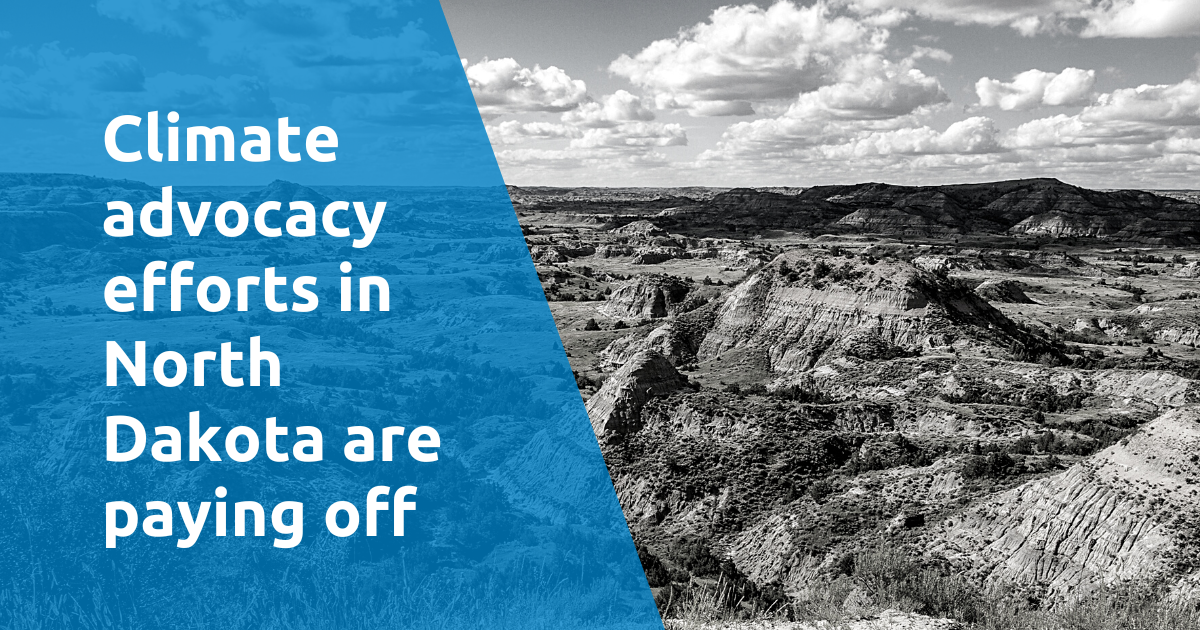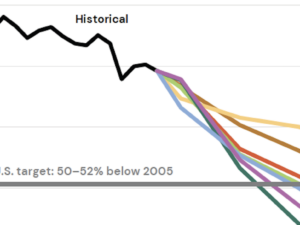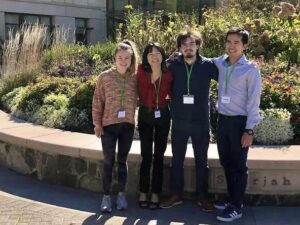Climate advocacy efforts in North Dakota are paying off
By Katie Zakrzewski
On Aug. 22, Senator Kevin Cramer (R-ND) tweeted about meeting with CCLers to discuss the Growing Climate Solutions Act and conservative mechanisms for addressing climate.
“This could be a geopolitical tool for the US to capitalize on our energy successes,” Sen. Cramer wrote. “We do it better & cleaner than everyone else!”
Met today with the ND chapter of the @citizensclimate to discuss the Growing Climate Solutions Act & support for a carbon border adjustment mechanism. This could be a geopolitical tool for the US to capitalize on our energy successes. We do it better & cleaner than everyone else! pic.twitter.com/5nwYBJBOJA
— Sen. Kevin Cramer (@SenKevinCramer) August 22, 2022
But this enthusiastic support from a Republican member of Congress didn’t just come out of the blue. A lot of work has been going on behind the scenes to move North Dakota’s Republican lawmakers forward on climate advocacy.
Mindy Ahler is the North Wind Regional Coordinator for CCL. The North Wind region comprises Iowa, Minnesota, North Dakota, Nebraska, and South Dakota. This past June, several CCLers, along with Mindy, organized an outreach tour across North Dakota. Those members who helped with the tour included
- Linda Kingery, North Dakota state co-coordinator
- Brad Kingery, North Dakota state co-coordinator
- Dr. Shelley Lenz, CCL volunteer
- Moones Alamooti, CCL volunteer, and
- Jessica Eagle-Bluestone, CCL volunteer
The tour consisted of conversations, presentations, and stops in cities such as New Town, Valley City, and Bismarck. Audiences included local organizers, local citizens’ groups, and a tribal government member.
The ND Chapter of @citizensclimate hosted the “Energy and Agriculture: Growing Climate Solutions in North Dakota” Conference yesterday at the MHA Interpretive Center in New Town. This beautiful new building holds an informative history of the Mandan, Hidatsa, and Arikara peoples pic.twitter.com/WLlwLKAjvt
— Paul Overby (@VerdiPlus) June 26, 2022
Mindy emphasizes the importance of having tours and conversations in states that are more rural.
“I think it’s important to say that the number of people was small, but in a rural state like North Dakota with a small population, every person has a big impact when they reach out to their members of Congress and talk to their friends and neighbors. So every contact we made was important. This was the first time most of our CCL volunteers had met each other in person,” she shared. “That really showed in the positive energy on our monthly chapter meeting. We shared highlights from the tour and appreciations for each other, and you can feel the difference the personal relationships have. Just like we always say in CCL — it’s all about the relationships.”
One of the locations on the tour was the Mandan, Hidatsa and Arikara (MHA) Nation Interpretive Center, located just west of New Town, North Dakota; it’s a net-zero building with geothermal heating and a solar array, and it houses a beautiful museum and meeting spaces.
Participants of the event first took part in a guided tour of the museum space. Adrian Baker of the MHA Interpretive Center shared the story of the Mandan, Hidatsa and Arikara peoples — a moving story of resilience and the many achievements and contributions of the MHA peoples throughout history.
Dr. Shelley Lenz welcomed the group, and Mindy provided an overview of Citizens’ Climate Lobby. Dr. Lenz then moderated the Nature-based Climate Solutions panel, focusing on how grasslands, forests and farming are growing climate solutions.
The panel featured a local farmer, a rancher, a soil scientist, and a forest manager, who emphasized that grasslands and forest lands offer opportunities for carbon storage, biodiversity and climate protection. These panelists highlighted that understanding the carbon cycle and making reliable measurements are the foundation of nature-based solutions. Another solution that panelists focused on was increasing soil carbon to drive productivity by improving soil health and water infiltration.
“I’m on several forest councils and boards, and if I could have written a bill myself, it would have been the Growing Climate Solutions Act. I think that really leads us down the right path and gets us thinking,” shares Brad Kingery, a panel member, and forest manager.
“I have been studying the uptake of carbon in the carbon cycle in grasslands for several years, and we’re trying to understand better how grazers can affect that cycle and improve the production and sequestration. These are the things that we’re discussing, and the data aren’t quite there yet, so this is where we’re focusing research,” explained Dr. Rebecca Phillips, a soil scientist.
“We’re all land stewards, and that’s the passion of a lot of us North Dakotans, and we’re additionally producing food. What we want to maintain is how we make the climate, that’s affecting food production and security and our landscapes…how to come up with the policies and climate solutions that directly benefit our land stewards,” shares Dr. Shelley Lenz.
Linda then moderated the All of the Above Energy panel, addressing how North Dakota’s energy resources and emissions reductions contribute to local and national climate solutions. That panel’s participants consisted of a PhD candidate with an emphasis in geothermal energy, the Director of the MHA interpretive center, and a research engineer with a speciality in carbon capture and storage.
Participants in this panel emphasized that North Dakota has a wide range of energy resources; emissions reductions come from carbon capture and sequestration (CCS) and development of wind, solar and geothermal. The panel drew attention to the fact that the MHA Nation sees opportunity to make investments in clean energy and sustainability. Panelists posited that geothermal is emerging as a potential source of baseload power, and carbon capture and storage is an emerging technology. North Dakota has a Class VI well permit from the EPA to inject and store carbon dioxide.
“In 2012, I got put in this position and started doing a lot of research and looking into the future. I was trying to plan beyond my lifetime and how this could become sustainable,” explains Delphine Baker, Director of the MHA Interpretive Center. “I realized that once we got this facility built, it would be the younger generation that would fill it, that’s going to keep it alive and keep it growing throughout the years, and it’s going to preserve our sovereignty as a tribe.”
Mindy highlights the significance of this event and this North Dakota tour.
“This event was held in the heart of energy country. In the surrounding area are oil wells, coal mines and coal power plants, a hydroelectric dam, corn ethanol plant, wind turbines and solar panels as well as research on carbon capture and sequestration (CCS) and geothermal combined heat and power.”
The participants covered many parts of North Dakota, and CCL volunteers had the chance to meet one another for the first time in person.
“We strengthened our network. There were a number of attendees, including panelists that were not familiar with CCL before this event that now are potential allies and experts we can look to as we move forward on climate solutions. Some of those potential allies include those working on the Meadowlark Project, in the solar industry, MHA Nation members, UND faculty, soil scientists, ranchers, and others.”
These grassroots activities, educational panels, and networking opportunities are crucial to building allyship and increasing the efficiency of CCL’s climate advocacy. This tour and the hard work that went into it is crucial in getting members of Congress, like Sen. Cramer, to see that climate is a policy worth championing.






